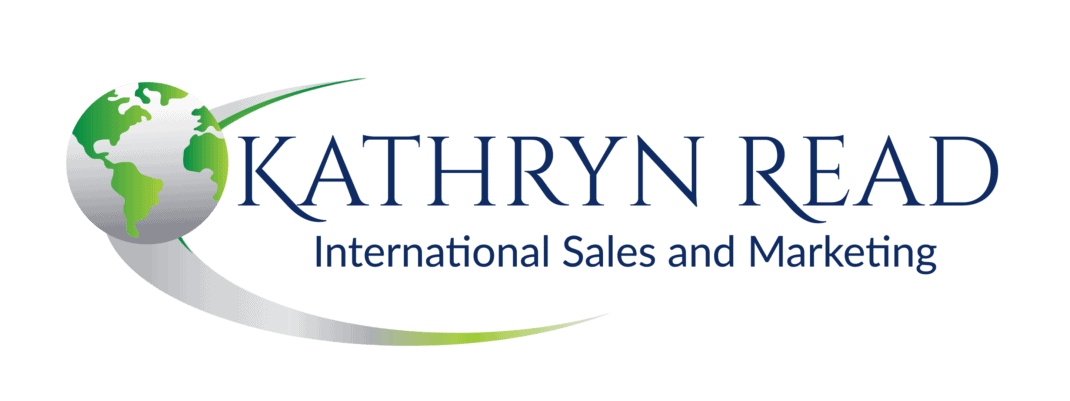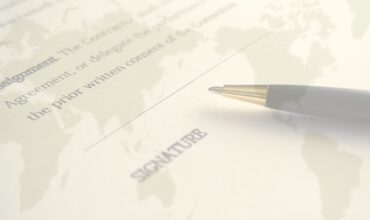Dealing with tariffs is an increasingly necessary skill in international business. In the world of international trade, tariffs are a bit like the weather – constantly shifting, often unpredictable, and always there in some form. While 2025 has already brought its fair share of storms, including the introduction of 50% tariffs on imported steel and aluminium, the message is clear: we’re not returning to “normal” (whatever that is) anytime soon.
Whether you’re selling gourmet chocolates into Vietnam, or distributing herbal teas in North America, tariffs affect every rung of your supply chain—from the price of packaging, to your customer’s shelf strategy. So what can you actually do to manage your supplier and distributor relationships when duty costs could double mid-shipment?
Table of Contents
First up, what are tariffs?
Tariffs have been in the news pretty much every day in 2025, but these are not some new invention of the present US government. Tariffs, also known as customs duty, or simply duty or customs are pretty much as “old as the hills”, and have been used over centuries to bring in taxes, protect local industries or, as now, push political agendas.
I want to highlight at the beginning of this post that this is a topic which you will frequently encounter if you are involved in international business, (but usually not to the extent of the recent US measures) and so dealing with tariffs is part of daily life for exporters.
According to Wikipedia, the answer to “what are tariffs?” is:
A tariff or import tax is a duty imposed by a national government, customs territory, or supranational union on imports of goods and is paid by the importer. Exceptionally, an export tax may be levied on exports of goods or raw materials and is paid by the exporter. Besides being a source of revenue, import duties can also be a form of regulation of foreign trade and policy that burden foreign products to encourage or safeguard domestic industry. Protective tariffs are among the most widely used instruments of protectionism, along with import quotas and export quotas and other non-tariff barriers to trade.
Wikipedia
Tariffs can be fixed where a constant sum per unit of imported goods or a percentage of the price is levied (eg. 25% of the product value + freight cost) or variable where the amount varies according to the price (eg items below €100 are subject to 20%, but above that value the tariff is 22%).
Tariffs are generally explained as a protectionist measure to either protect local (maybe nascent,) industries or prevent consumption, eg high tariffs on what are perceived as luxury goods, alcohol or vehicles. They can be used to attempt to change a trade imbalance (or prevent an industry which is heavily state subsidised in one territory with low environmental regulations eg solar panels), from dumping their products at unrealistically low prices in another, destroying local industry. Economies are rarely that simplistic though and using the tariff lever needs to be done with a delicate touch to avoid undesired side-effects. Economists generally believe that tariffs are counter-productive and slow down economic growth, even if in certain cases they have a short term justification.
Let me make it very clear: The economic burden of tariffs falls on the importer, the exporter, and above all the consumer.
US Tariffs in 2025 – Where do we stand?
I am mentioning this simply because it would be negligent and also ridiculous NOT to do so at the time of writing in 2025. I certainly don’t want to get into any political arguments on here, but simply deal with the effects of the tariffs imposed or at least proposed.
The 2nd Trump administration is intending to impose sweeping massive tariffs on many countries’ exports to the USA (as of June 2025 there are a number of court appeals within the US as well as international negotiations ongoing). These taxes would mean up to an additional 145% on certain goods from China with lower % affecting other countries.
The situation is highly volatile with new decisions being made on an almost daily basis, so if you are in the US or planning to trade with the US, be sure to follow this closely to make sure you don’t get caught out by importing products that you can’t sell profitably. There’s also the risk of retaliatory tariffs and the whole situation escalating even further.
I’ll say it again: it’s US consumers and businesses who are paying the greatest price with these measures. Of course foreign businesses may be harmed if the US is an important sales market for them, but they at least have options to build other markets away from the US if they choose for the medium term.
Take this example:
In 2018, Trump imposed tariffs on steel and aluminum imports, resulting in price increases for Americans. In December 2021, the price of one metric ton of hot-rolled band steel was $1,855 in the US compared to $646 in China and $1,031 in Europe.
Trump Administration Tariff Actions: Frequently Asked Questions (Report). Congressional Research Service.
So what kinds of steps can you take in practical terms for minimising the impact of tariffs or customs in your international trading partnerships?
Always Start With the Numbers
In so-called “normal times” in the past most consumers didn’t even realise that there are some kind of tariffs levied on their imported goods.
Ideally when you start researching any new market, you should be making sure that you understand ALL of the costs that go into the final consumer price for your products when they land on the shelf.
That means knowing:
- Your landed cost (product + freight + duties + insurance).
- What tariff changes mean in both % and absolute terms – are we talking 2%, 20%, or 100% here?
- what is the calculation basis for those tariffs?
- Who’s responsible for paying duties according to your agreed Incoterms?
One of the biggest missteps I see is suppliers operating on outdated or incorrect assumptions, especially when pricing into new markets. If you don’t know your import partner’s duty obligations, you can’t possibly know whether your product is price-competitive.
A clear price map across the entire chain is essential. That’s not just nice-to-have – it really is non-negotiable.
Also, if we’re looking at how you can deal with sudden and unexpected tariff changes, you have to know what things cost up until now, and what the planned changes mean for the calculation. Before you even think about having any difficult conversations with your partners you need to understand the full impact of the changes.
Who is paying for what up until now? Knowledge is power.
I’ve seen a couple of people in online forums, in places like Reddit, for example, saying, “Oh, I’ve got this container coming in from China this month, and it’s 1000s of dollars worth of goods, already at sea. Then, these tariff changes were implemented, and now suddenly I’ve got to pay more than double the cost of the goods.”
Kathryn Read
They simply hadn’t realised that a) this is how tariffs work and b) what that would mean for their numbers
Make sure that you’re working with the correct HS codes for your products, and recognise that these are sometimes applied differently across jurisdictions – if you’re not sure, get expert help because country of origin and HS codes are complicated!
Communication Is Your Strongest Currency
I can’t stress this enough: when in doubt, over-communicate.
Whether you’re dealing with suppliers or distributors, the strength of your relationships will be tested in tariff-heavy times. The key is to be honest, timely, and collaborative. Start the difficult conversations before things become urgent.
If you’re the importer and tariffs spike unexpectedly, bring it to your supplier’s attention with real figures. Show them the effect on your bottom line and discuss what your options could be. Maybe that’s:
- Asking for temporarily extended payment terms.
- Bringing forward shipments before the tariff hits & building stocks.
- Splitting the added cost 50/50 for a limited period if it’s unclear how permanent any increases will be.
- Making a plan together for how you can step by step increase prices to consumers
If you’re the supplier, check in regularly with your importers. Do they have their hand on the pulse on local tax shifts or regulatory changes? Have price ceilings changed in retail? How are your competitors reacting? Information should flow both ways, especially when your shared goal is market growth.

Distributors Are Not Just Middlemen – They’re Your Extended Sales Team
In food and beverage especially, your distributor isn’t just moving boxes. They’re interpreting what your customers want, where your price point sits, and how your competitors are behaving. And you need that ongoing feedback about how the market is reacting.
When tariffs hit, you’ll need their on-the-ground insight in real time more than ever:
- Will a price increase now kill sales momentum?
- Are customers loyal enough to absorb the hike?
- Will retail even allow you to increase prices at this time?
- What are local competitors doing?
Treating the problem as a shared challenge can strengthen your relationships. Offer flexibility where you are able, be that in terms of marketing support, staggered price increases, reviewing margins or payment terms… Just don’t dump the problem in their lap and expect them to deal with all of it in a way that’s a win-win for both of you.
Even if it’s agreed in the contract that the importer should pay tariffs, sudden massive spikes can be more than they are able to deal with, without damaging your brand equity.
If a wholesaler needs 60–90 days to implement a price change into retail & you’re increasing prices tomorrow, but they’ve already committed to fixed retail contracts or promotion calendars, you have to calculate if that is all even feasible.
It means having open conversations together and looking at stock levels, as well as what will arrive into the warehouse before the tariff hits, to establish whether you are able to meet those obligations, or need to consider alternative solutions such as a delayed price increase, or negotiating a change to the promotion plan.
Suppliers Also Need Support (And Accountability)
If you’re the importer or brand owner, don’t be afraid to ask for help from your suppliers. But come with numbers, context and suggestions.
Try something like:
“With the new aluminium tariff, packaging costs have jumped by 15%. I can absorb half of that for this quarter, but only if we can discuss a temporary adjustment to our MOQ or payment terms.”
Don’t just make demands – build proposals. Remember that you are all on the same side, trying to increase sales, and this kind of change is out of all of your control. You can only look at ways of minimising the impact of tariffs.
And don’t forget: if your agreements don’t already include clauses for currency fluctuations or regulatory shifts (e.g., price review triggers when FX or other cost factors move ±5%), now’s the time to revisit them.
Short-Term Tactics vs Long-Term Strategy
Let’s face it: food prices will rise as a result of tariffs.
It might not happen overnight, but it will come through subtle shifts like:
- Less frequent promotions
- Downsized packs
- Reformulated recipes with cheaper ingredients
- alternative packaging options (perhaps moving away from aluminium and steel)
Big players like Conagra or Nestlé have two main levers:
- Absorb the hit (if they’ve got the margins and cash).
- Pass it on & assume their brand is strong enough for consumers to simply suck it up
Challengers and mid-sized brands often don’t have that luxury. They need to act faster, and smarter.
A few ideas you could consider:
- Renegotiate with suppliers – especially on transport, packaging, or payment terms.
- Explore local sourcing – make it less about national pride, & more about reducing volatility whilst increasing sustainability.
- Build stock before tariffs hit – if your cash flow allows and it’s a practical option taking your shelf life into account.
- Change pack formats – smaller packs, multi-packs, or cheaper materials.
- Optimise elsewhere – shipping consolidation, simpler recipes, smarter promotions.
Just remember: don’t make sudden shifts without shaping the consumer message. If your tin of biscuits is smaller, customers will notice. Be proactive in shaping a compelling value or sustainability story.
How you approach price increases to consumers will depend on the market which you’re active in. for example, you might find that making a gradual step by step increase is more acceptable in Japan, whereas markets such as Kazakhstan, Lebanon or Belarus, which are all used to quite volatile currency fluctuations might be more open to adjusting prices on a more flexible basis.
If those approaches are not enough for the longer term, you might need to consider more drastic steps such as alternative routes into market, changing where you produce the products/source the raw materials etc. These are not “overnight” solution options though.
Shipping in in bulk and packing locally might put you into a different tariff class, or you could potentially produce under licence locally to avoid those taxes altogether (don’t forget to analyse where your materials are coming from though first!). For example with beer this is quite a frequent solution if you can find a trusted partner to brew to your recipe and standards.
Don’t Vanish from the Market if you can avoid it
Sometimes, the numbers simply don’t work. If tariffs spike beyond what your product can sustain, you may need to pause or reduce your presence in a jurisdiction. But that doesn’t mean disappearing entirely.
That can be a difficult discussion to have with a distribution partner though and isn’t a decision to be taken lightly. Obviously it will depend on both how important the market is to your overall sales as well as how important the distributor is to your strategy as to how far you are prepared to support them before taking the decision to look for alternative solutions.
Here are some options that you could consider when dealing with tariffs:
- Readjusting your range to optimise for profitability – analyse your product mix, especially if you produce in a variety of countries of origin.
- Cross-border e-commerce via free trade zones.
- Digital marketing to keep your brand top of mind.
- Working through trade associations to maintain political pressure or lobby for tariff reconsideration.
- Exploring third-country routes or manufacturing partnerships & licensing.
Disappearing makes it ten times harder to return. Do as much as possible to stay visible, even if your sales slow massively. Make sure that you know how many SKUs or what level of retail presence you need to maintain in a market in order to be taken as a serious player.

Scenario Planning: Your New Favourite Tool for Handling International Trade Tariffs
I’ll leave you with this: don’t wait until the next tariff hits.
Create a few realistic scenarios with clear thresholds:
- What happens if tariffs hit 20%?
- What if steel prices go up again next quarter?
- What if currency moves by 10%?
How essential are your goods to consumers? If prices increase too much, will they simply decide not to buy?
Make sure you have contingency plans, pricing strategies, and supply chain alternatives mapped out before you’re scrambling. This should be a standard part of your risk management process, but I see time & again smaller companies who don’t do any real form of risk assessments.
Do you know what is the point at which a market becomes non-viable for you? You might need to actually rethink the role of that market to more of a slow burn, opportunistic location for you, rather than a market that you’re relying on for your core growth. You might need to think about prioritising other regions in that case.
If a distributor is not willing or able to support you, then you need to be clear in advance about where that market stands on your priority list and which options you have for minimising damage. Is this a strategic or purely a transactional partner for you, as that will partly dictate how you proceed…
I’ve not covered moving production or reshoring in this post because it’s an extremely complex topic that can’t be implemented overnight. With any project of this kind though, you need to check the laws around origin extremely carefully. Not just because they are super complex, and almost no country is spared from US tariffs at the moment, but also because you can finish a product in country A but that doesn’t necessarily guarantee that you’re entitled to use that origin. Get an expert in to help if you are considering this!
And finally, remember: there is no “back to normal.” This IS the new normal. Volatile, fast-moving, and deeply interdependent.
Dealing with Tariffs Should be a Multilayered Approach
Remember that whilst tariffs may be unpredictable, your response doesn’t have to be.
What separates resilient companies from reactive ones isn’t luck: it’s planning, communication, and partnerships built on trust. Your supplier and distributor relationships are your lifeline right now so make sure you invest in them, whilst at the same time keeping a focus on profitability. Being strategic about where you can maintain margins doesn’t mean a completely open book approach, but it does mean a lot of tough conversations, and being clear about where your “backstop” points are in each market.
If you decide that you need to part ways with a supplier or distributor due to tariff changes, be as transparent as possible during the process. Burning bridges is never a great strategy and can really come back to bite you later. And obviously take legal advice first to make sure you’re not breaking your contract.
And if you’re still hoping to “ride it out” without changing anything… well, that ship has likely sailed.
Recommended Podcast
Much of this post has been based on the podcast interview I had with Kim Kirkendall on the International Trade Resources podcast
Thinking that working with a consultant would accelerate your international expansion?
If you’d like to learn more about working with me for support on your internationalisation projects or personal export knowledge, you can book a 30 minute international clarity call here.
If you haven’t already signed up for my free e-book about how to select which international market to enter next, you can do so here, or using the form below.
If you enjoyed this content please share it on social media or recommend it to your network.
Pin this post for later!
If you are interested in working with distribution partners in your export markets, you might find these posts also interesting:
- Define Your Ideal Distributor Company Profile to Succeed Internationally
- Carrying out an Annual Distributor Performance Review
- Are you a great supplier?
- Factors to Consider when Deciding on Payment Terms
- Advantages of Working with a Distributor in Export Markets
- Making the Best First Impression in International Business Meetings
- Finding the Perfect Partner: Distributor Dating in a Hybrid World
- Store Checks in International Sales: a Retail Audit Example
- How to Make an Export Plan Part 1
- How to Make an Export Plan Part 2
- Starting to Think About Your International Distribution Agreement
- An International Distribution Agreement Checklist Part 1
- A Distributor Contracts Checklist Part 2
- The Legal Requirements in an International Contract 3
- Types of International Distribution Channels
- International After Sales Service
- 55+ Questions to Ask When You’re Looking for International Distributors
- International Customer Service in Korea: Dealing with Media Crises
- Why an Integrated Business Planning Framework could Improve your Exports
- Export Pricing Strategy in International Trade as a Key Factor of Product Market Fit
- Why and How should you Enhance Distributor Loyalty in Export Markets?






